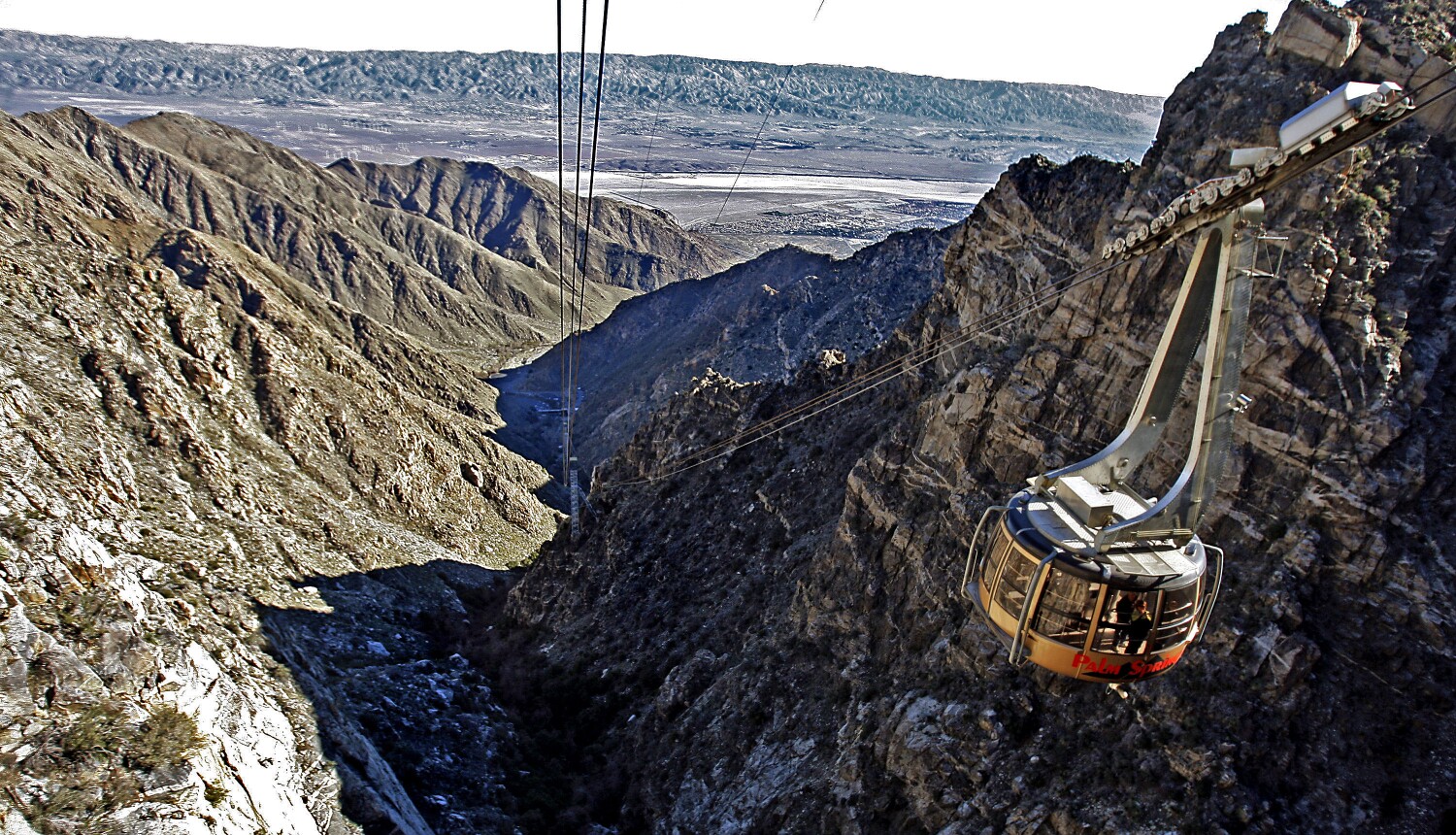A flash flood that stranded more than 200 people on the Palm Springs Aerial Tramway on Monday in California’s latest bout of heavy summer rainfall is expected to close the attraction for a week.
Citing extended cleanup efforts, officials said the tramway is scheduled to reopen next Monday.
“After completing a thorough inspection earlier today, we realized that it would take additional days for the mud and debris to be fully removed from our equipment and dock area,” said Nancy Nichols, the tramway’s general manager. “We sincerely regret the inconvenience this is causing our visitors and appreciate their understanding.”
The tramway begins its 2.5-mile scenic trek in the Sonoran Desert and ends in an alpine forest, going from the floor of the Coachella Valley to near the top of San Jacinto Peak, some 8,500 feet above sea level. It opened in 1963 and is considered one of the largest rotating aerial trams in the world.
The National Weather Service in San Diego had warned that storms developing in the mountains and deserts Monday afternoon were becoming more numerous and could lead to torrential rainfall.
In a preliminary local storm report published Tuesday morning, the weather service said 1.99 inches of rain fell at San Jacinto Peak around 4 p.m. Monday, causing “impassible mudflows along the exit road from the Valley Station.”
The mudflows temporarily stranded more than 200 people on the tramway, the weather service said. The flow appeared to be mostly mud and not debris.
In 2019, a debris flow caused by heavy rain led to a similar closure, the weather service said.
This week’s flooding followed a series of recent monsoonal downpours in California’s deserts and mountain areas.
Death Valley National Park was closed after 1.46 inches of rain fell in a few hours Friday, nearly 75% of the park’s average annual rainfall. About 1,000 people were trapped amid floodwaters and debris flows that uprooted trees, overturned boulders and sent parked cars colliding into one another.
Early last week, about 30 cars were stranded when heavy rain sent mud and debris onto Highway 38 leading to Big Bear, and flash flooding washed out parts of the Mojave National Preserve, closing most paved roads into the park.
Though monsoonal storms are not atypical at this time of year, climate change and rising global temperatures increase the chances that rainfall will be more intense when conditions are right for a storm, experts say.
“We’re already in a climate where the odds of intense precipitation are elevated,” climate scientist Noah Diffenbaugh, a professor and senior fellow at Stanford University, told The Times after the historic flooding in Death Valley. “And we have a clear understanding that as global warming continues, the heavy precipitation events are likely to continue to intensify overall.”

